
Top 10 Most Powerful Rockets Of The Future
In this list, I will not only mention present and past rockets but also the ones currently in development that are the future of the space industry. The list is also in order based on how many tons (2000lbs) the rocket can put into LEO (Low Earth Orbit). Keep in mind a lot of the LEO numbers of the rockets listed are estimated as some of these rockets have not even launched once yet. It’s very possible for things to not go as planned in the development of the rockets or for the number to be an over or underestimation.
10. Atlas V (21 Tons)
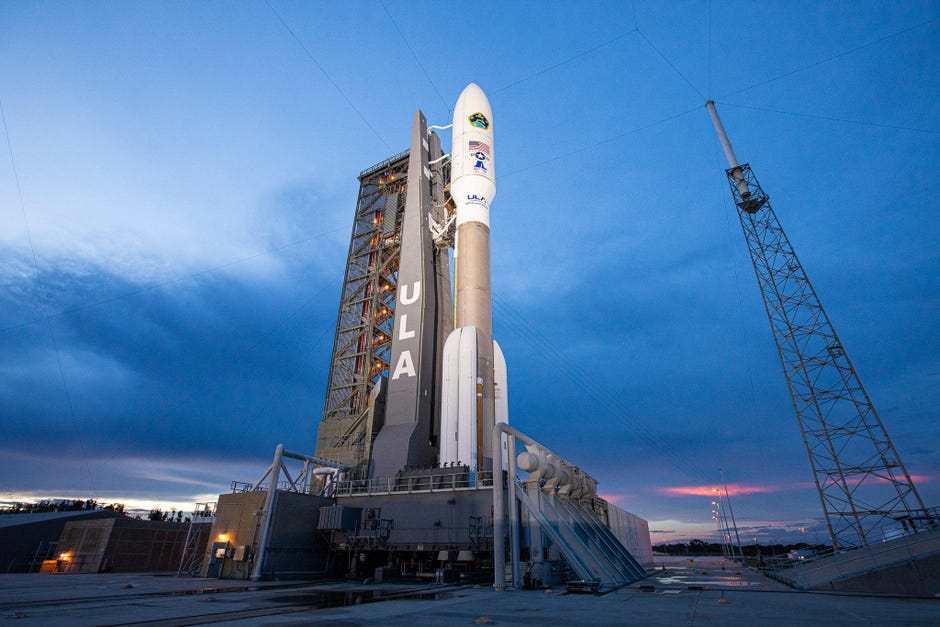
The Atlas V is a rocket capable of bringing 21 tons into low earth orbit. The Atlas family of rockets began their life in 1957 as the first successful Intercontinental Ballistic Missile (ICBM) launched by the United States. Originally designed by Lockheed Martin and now operated by the United Launch Alliance or ULA. The Atlas V rocket has a very good track record and is considered to be one of the most reliable launch vehicles.
It mainly takes satellites, and other payloads into orbit for NASA, the Air Force, commercial customers, and more. The Atlas V has two main stages. One large first stage powered by a Russian RD-180 engine. The Centaur upper stage is powered by one or two American RL10 engines. The Atlas V had many different configurations depending on what was needed for the mission. To be more specific the Atlas V payload fairings are configurable to fit a variety of spacecraft heights, both 4-m and 5-m diameter variants are available in three lengths. The 4-m PLF (payload fairing) is a metallic design, configured by adding additional cylindrical plugs to achieve the desired length.
Starting in October 2007 to today the Atlas V has launched over 70 times without a single failure. This year in 2021 ULA announced that the Atlas V would be retired after an additional 29 launches.
Cost Per Launch – $110 – 153 million
Reusability – None
Height – 58.3m (191ft)
Full Weight – 333,000kg (730,000lb)
9. Vulcan Centaur (30 Tons)

The Vulcan Centaur is ULA’s upcoming rocket planned to bring up to 30 tons into low earth orbit. The Vulcan Centaur has been in development since 2014 by the United Launch Alliance. One of the main goals of this spacecraft is to provide a launch vehicle for the U.S. government’s National Security Space Launch (NSSL) program.
The Vulcan is a combination of technology and information gained from the Delta IV Heavy and the Atlas V rockets. The first stage uses Blue Origin’s BE-4 engines. Blue Origin won a competition with Aerojet Rocketdyne for which engine would be selected for this rocket. These engines are powered by liquid methane and liquid oxygen. This type of fuel is very popular in future rockets as you will see because of its cost, efficiency, and convivence. The Vulcan’s upper stage is the Centaur V. This second stage will rely on two RL10C engines to power it.
This rocket also has a lot of different versions. It not only has multiple fairing options depending on the cargo size but also additional boosters. The Vulcan Centaur can add up to 6 SRBs (Solid Rocket Boosters) onto the sides of the first stage to help create a lot more power. The first flight is expected to be in 2022.
Cost Per Launch – $82 – 200 million
Reusability – None
Height – 61.6m (202ft)
Full Weight – 546,700kg (1,205,300lb)
8. Delta IV Heavy (32 Tons)

The Delta IV Heavy is developed by ULA and is capable of bringing up to 32 tons into LEO. This rocket currently has the second-highest operational launch capacity behind SpaceX’s Falcon Heavy. The first launch of this rocket was in 2004. Since then, it has only launched 11 times in over 15 years. Other than a few errors on the first test flight the rocket has a 100% successful mission track record.
The main payload for this rocket was military equipment from the United States Air Force. However, it did also take some non-military payloads and one commercial satellite. The Delta IV Heavy consists of two main stages with an additional two large SRMs (Solid Rocket Motors) on either side for additional power. The main engine on the rocket is the RS-68A developed by Aerojet Rocketdyne. Currently, this is the largest existing hydrogen-burning engine. In addition, the upper stage relies on the RL10 propulsion system to power it.
The Delta IV Heavy is set to only launch 3 more times before it is replaced by ULA’s future rockets. It is planned to be retired in 2023 with its successor being the Atlas V and the upcoming Vulcan Centaur.
Cost Per Launch – $350 million
Reusability – None
Height – 72m (236ft)
Full Weight – 733,000kg (1,616,000lb)
7. New Glenn (50 Tons)

The New Glenn is Blue Origin’s next big rocket currently in development. New Glenn development began in 2012 and is still in a very premature state. New Glenn is a single configuration heavy-lift launch vehicle capable of carrying people and payloads to Earth’s orbit and beyond. The main goal of this spacecraft is to cut down on costs and try to make space more accessible
The plan is for the first stage or the booster to launch the rocket and then come back down to earth after stage separation and land. Each booster is supposed to last for 25 launches. The booster will land on a ship out at sea similar to SpaceX’s drone ship landings with the falcon 9. The engines on the New Glenn will be the BE-4 engines. Blue Origin says this engine is the world’s most powerful liquid oxygen / liquefied natural gas engine. This will allow New Glenn to bring up to 50 tons into low earth orbit. Unlike the booster, the upper stage is expendable and will not be reused. The booster will use a set of fins and strakes to orient and help control the booster on descent allowing it to land safely.
The first launch is expected to be in late 2022 after Blue Origin pushed it back from 2021. If the New Glenn is successful, it will help lower launch costs and provide more access to space.
Cost Per Launch – Unknown (~ $50 – 60million)
Reusability – Partially (First Stage)
Height – 96m (313ft)
Full Weight – Unknown
6. Falcon Heavy (64 Tons)

The Falcon Heavy is SpaceX’s current most powerful fully operational rocket. Capable of bringing up to 64 tons into low earth orbit. In early 2010 SpaceX started development on the Falcon 9 rocket and the Falcon Heavy. The Falcon Heavy is a partially reusable heavy-lift launch vehicle. This rocket is also currently the most powerful operational rocket in the world.
The Falcon Heavy is composed of 4 main parts. There are three Falcon 9 engine cores and an upper stage. The three stages each have 9 Merlin engines creating a total array of 27 on the boosters alone. This creates more than 5 million pounds of thrust at liftoff. Its first launch was in February of 2018 and altogether has only had 3 launches. On one of the launches, the cargo was a Tesla that Elon wanted to send to space. On the second launch of the Falcon Heavy, the mission was 100% successful and saw all three boosters safely touch down. After liftoff, the two side boosters separate and come back towards Earth. Using their grid fins they orient themselves and complete two landing burns to slow them down prior to landing. The third booster does the same but is separated later and lands on a drone ship in the ocean.
Falcon Heavy’s unique design makes it one of a kind and one of the only partially reusable rockets in the world. This innovation has helped bring down its launch cost and inspire change in the space industry.
Cost Per Launch – $90 million
Reusability – Partially (Boosters)
Height – 70m (229.6ft)
Full Weight – 1,420,788kg (3,125,735lb)
5. Yenisei (130 Tons)

The Yenisei is a super heavy class launch vehicle currently under development. The first development began around 2017 with work on the engines. It is being developed by the Russian Space Industry and the main developer is RSC Energia. This rocket is planned to bring up to 130 tons into low earth orbit.
The first stage will consist of 6 blocks. Each block will be based on the first stage and use the RD-171MV engine. The RD-171MV engine is currently one of the world’s most powerful liquid-fuel rocket engines. It was designed and produced in the Soviet Union by NPO Energomash for use with the Energia launch vehicle. The Russians are mainly known for their Soyuz rocket which almost has a very impressive 1700 launches.
The final design is expected to be completed in 2021. The first stage tests are planned for 2028 and they expect testing to last into 2032. The second stage of testing will take place in 2032-2035. It is planned to launch LVPK (Russian lunar lander) and other uncrewed payloads for the construction and operation of a base on the lunar surface.
Cost Per Launch – ~$500 million (Estimated)
Reusability – None
Height – 75m (246ft)
Full Weight – 2,873,054kg (6,333,999lb)
4. SLS Block 2 (130 Tons)

SLS Block 2 or Space Launch System is NASA’s next big rocket currently finishing development. The development began in 2014 as NASA wanted a more powerful rocket. The SLS is supposed to be capable of bringing up to 130 tons into low earth orbit. NASA’s current main goal with the rocket is going back to the Moon and other planets in our solar system if possible. The Artemis program is using this rocket to build a Moon space station and base.
The SLS Block 2 is comprised of two main stages and additional boosters. The first stage contains the main propulsion system for the rocket. This stage alone provides about 25% of the thrust and is 65m tall. At the base of this stage are 4 RS-25 rocket engines. The RS-25 is a liquid-fuel cryogenic rocket engine that was used on NASA’s Space Shuttle. Attached to the first stage are two large SRBs for added thrust and power. The upper stage is powered by a single RL10B-2 engine. All of this together creates almost 9 million pounds of thrust. However, this power combined with no reusability comes at a cost. Each launch is expected to cost around $2 billion dollars.
The first launch of SLS is planned for late 2021. If successful it will be considered the most powerful operational rocket in the world.
Cost Per Launch – $2 billion
Reusability – None
Height – 111.25m (365.0ft)
Full Weight – 2,608,156kg (5,750,000lb)
3. Saturn V (140 Tons)
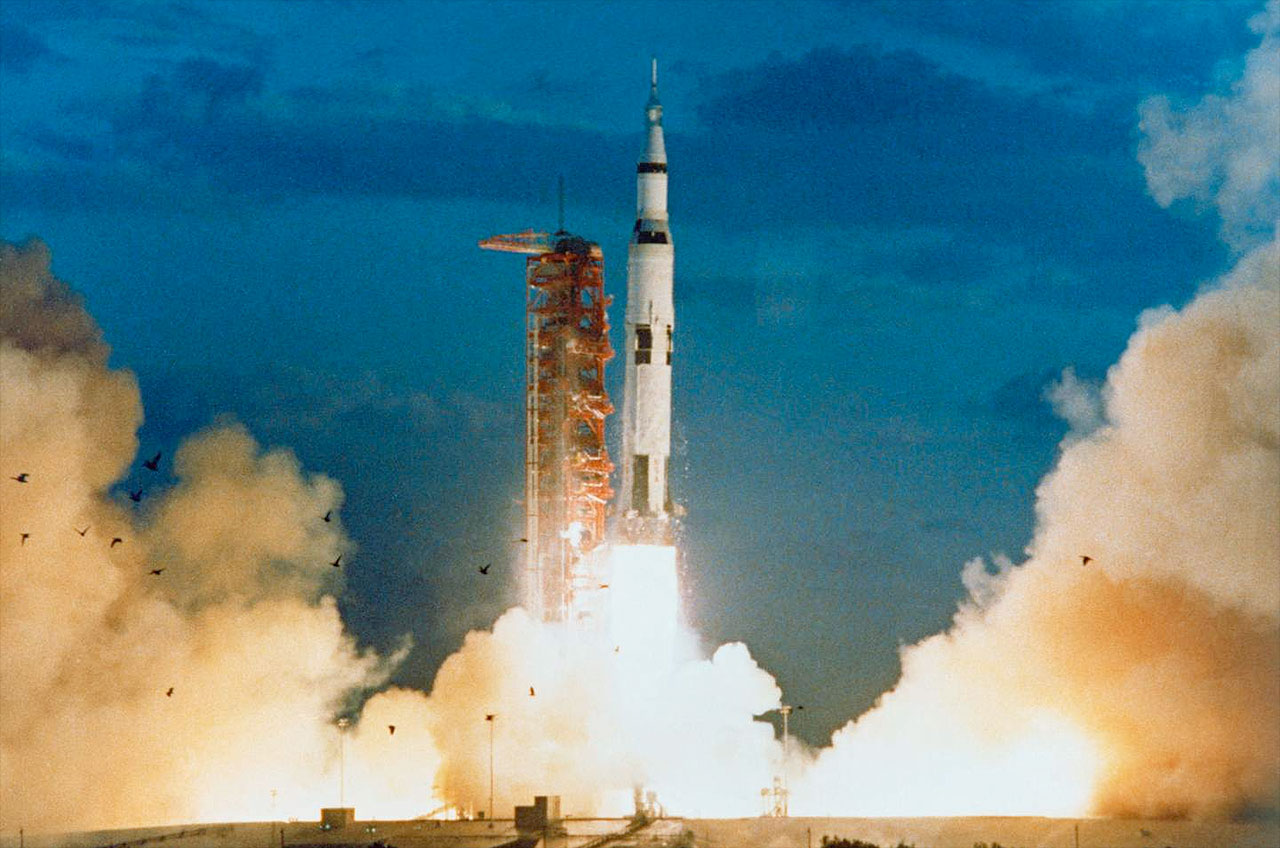
The Saturn V was a rocket built by NASA for the purpose of sending humans to the Moon. The Saturn V could be considered the most famous rocket ever built as it successfully put humans on the Moon not once but multiple times. This rocket was used in the Apollo program in the 1960s and 1970s. Capable of bringing up to 140 tons into low earth orbit the Saturn V was an absolute marvel of technology when it was built.
The specific Saturn V used to send humans to the Moon had three stages. Each stage would light its engines until it was out of fuel and would then separate from the rocket. The engines on the next stage would fire, and the rocket would continue into space. The first stage had the most powerful engines due to having the task of lifting the rocket off and picking up speed. The first stage lifted the rocket to an altitude of about 68 kilometers (42 miles). The second stage carried it from there almost into orbit. The third stage placed the Apollo spacecraft into Earth orbit and pushed it toward the moon. After the separation, the first two stages would end up falling into the water. The third stage was separated so late it would either stay in orbit or hit the Moon.
As you can see from this list the Saturn V rivals some of these future rockets in payload to LEO and that was built in the 60s. However, this innovation came with a big price tag. With the average cost per launch in today’s value being over $1.2 billion, it was an expensive rocket. Despite this high price tag, it did not stop it from putting the first humans on the Moon.
Cost Per Launch – $1.23 billion
Reusability – None
Height – 110.6m (363.0ft)
Full Weight – 2,822,000kg (6,221,000lb)
2. Long March 9 (140 Tons)

The Long March 9 is China’s future heavy launch class rocket capable of lifting 140 tons into low earth orbit. The Long March 9 as the name would suggest is the 9th iteration of the Long March rocket family. This rocket however is planned to be the most powerful China has ever made.
The Long March 9 is made up of three stages. On the rocket, there are 16 YF-135 liquid oxygen kerosene engines, each with over 300 tons of thrust, which will be used in the first stage. 120-ton hydrogen-oxygen engines will be used in the second and third stages, with four in the second stage and one in the third stage. There are also plans for there to be multiple variations of this rocket, each adding or removing additional boosters to the side of the rocket. Depending on how much thrust and power they need will decide the version used for the mission.
The rocket is planned to be first launched/completed in 2030. However, there is very little information about the development of this rocket so it’s hard to give an accurate time. If this rocket is finished and is capable of bringing 140 tons into low earth orbit it will be one of the most powerful rockets in the world.
Cost Per Launch – Unknown
Reusability – None
Height – 108m (354ft)
Full Weight – 3,739,415kg (9,087,000lb)
1. Starship (150 Tons)
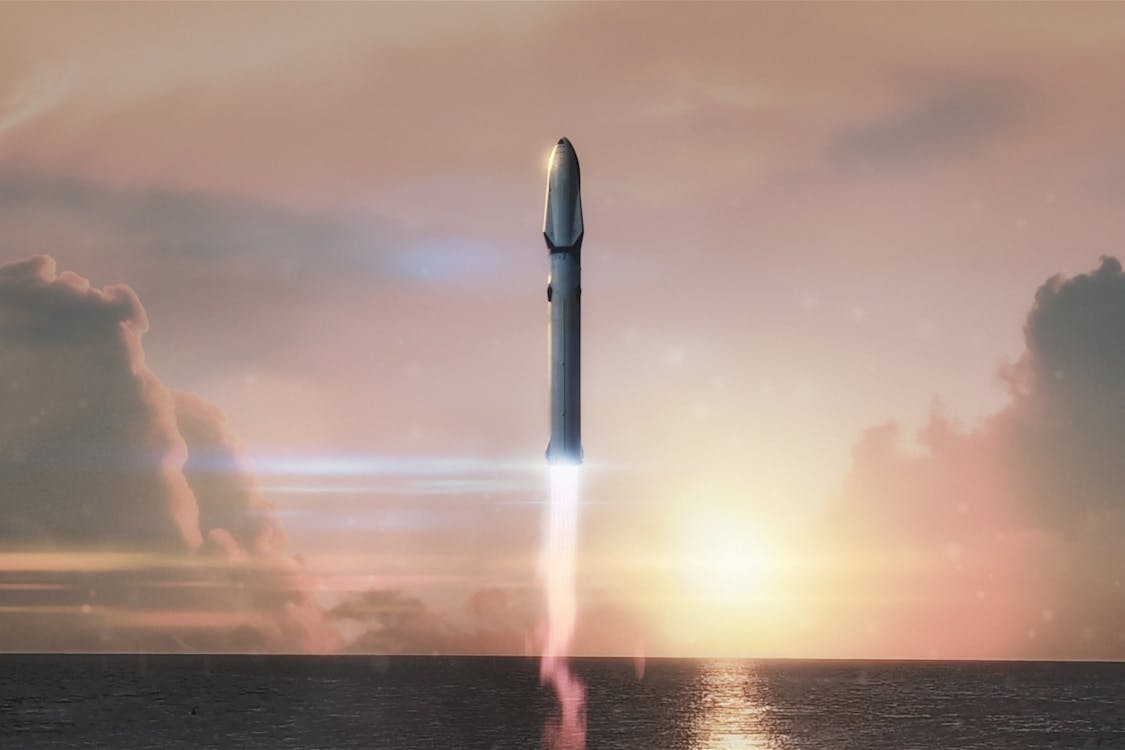
The final and possibly most powerful rocket in the future space industry is Starship. Starship is a next-generation rocket being developed by SpaceX. They only started development around 2018 but have made immense progress. Since 2018 they have developed many prototypes and have done multiple tests including static fires, pressure tests, hops, 10km flights, and more. With the first fully stacked Starship test within a couple of months it seems that Starship is ahead of the game for future launch vehicles.
Starship is made up of two stages. The first stage is called super heavy and will have around 30 raptor engines on the bottom. Raptor engines are created by SpaceX and were the first full-flow staged combustion rocket engine ever flown. On top of the first stage is the second called Starship. This upper stage has three sea-level Raptor engines and three vacuum raptor engines meant for thrust in the vacuum of space. The thing that makes Starship so special is that it’s fully reusable. The first stage disconnects and is planned to be caught out of mid-air with the launch tower. The upper stage has flaps to orient itself and after belly-flopping down to the ground, it lights its engines and lands legs down. If you want to read more in-depth about how special Starship is check out my other article here.
Starship is on track to have its first orbital test within a few months. Starship still has a lot of development to go through but SpaceX is working on it at speeds never seen before in the Space Industry. With the goal of each launch only costing $2 million, it could change the future of how we access space.
Cost Per Launch – $2 million
Reusability – Fully
Height – 120m (394ft)
Full Weight – 1,197,484kg (2,910,000lb)

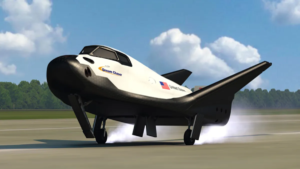
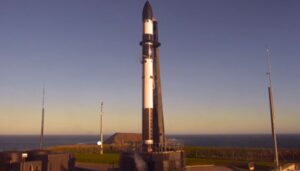
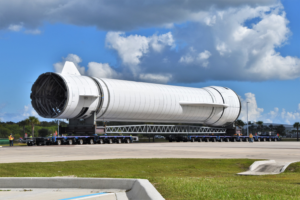
I like it whenever people get together and share thoughts.
Great blog, continue the good work!